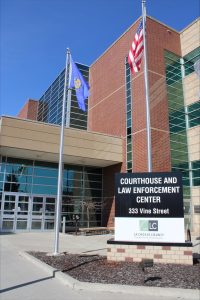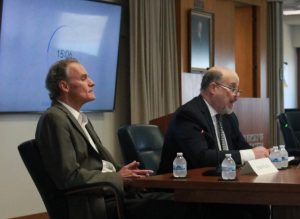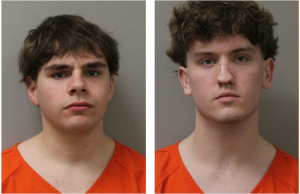Equity Gaps in Higher Education: A Conversation at UWL
November 13, 2018
On Friday Nov. 9 at 1:30p.m. in 150 Murphy Library, University of Wisconsin-La Crosse professors were invited to a talk titled, “Equity Gaps In Higher Education.” The talk was presented by Barbara Stewart, Vice Chancellor for Diversity and Inclusion, and Deb Hoskins, Inclusive Excellence Coordinator and professor of Women, Gender, and Sexuality Studies.
Hoskins started the discussion by stating the talk was only an overview and introductory session of equity gaps in higher education and that there would be a survey sent out to the professors in attendance. In this survey they could comment what they wanted more in-depth information on.
“[The survey] can help us figure out what the next steps are,” said Hoskins. She also encouraged to everyone that they can request her and Stewart to talk to their specific departments about equity gaps and other topics.
Equity gaps are “observed disparity between groups of students” as written by the ‘Instructor’s Guide to Inclusive Excellence,’ which was given as a handout at the talk.
Adding onto the definition, Stewart said, “It is persistent and pervasive.”
The ways that equity gaps have been reported at UWL have been from admission, retention, graduation dates in addition to grade point averages and DFW rates—meaning did the student receive a D in the course, an F in the course, or withdrew. The most studied identities are students of color, low-income families, women in particular fields, and first-generation college students.
“I think part of the conversation is the notion that they appear very early in education but there’s this notion that suddenly when folks jump to college, these gaps suddenly disappear and that is not the case,” Stewart said.
“The conversation that we’re having, the one that we’re having today, is hopeful in helping us understand that there are gaps all along the way.”
Stewart emphasized that the purpose of the talk and why there were professors is attendance is so staff at UWL can help bridge these gaps by educating themselves, sharing their information, and supporting each other.
“There are all kinds of things that can happen if you are the only person of color in a classroom because you walk through the door and you assume everybody is looking at you,” Hoskins said.
Stewart and Hoskins presented the audience with a ‘Success Framework for Instructors.’ This framework, which was also on the handout, showed what instructors need to do to bridge these equity gaps. This included high belief, high challenge, and high support.
High belief includes stepping away from deficit thinking and working on not blaming the student for not succeeding. High challenge focuses on high-impact practices like assigning import work that requires significant student effort. And high support emphasizes normalizing help-seeking and struggle while also building a relationship between student and instructor.
Hoskins said, “A PhD is kind of like a degree in fixed mindset thinking and without even thinking about it we reinforce the idea that you have to be super smart in order to do the work.”
Stewart concluded, “It’s that shift in thinking that is really needed. So, if you’ve got that student walking in and they’re the only one [with a marginalized identity] …you need to acknowledge that you want them here.






